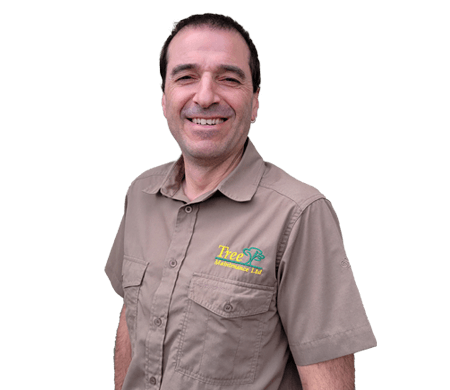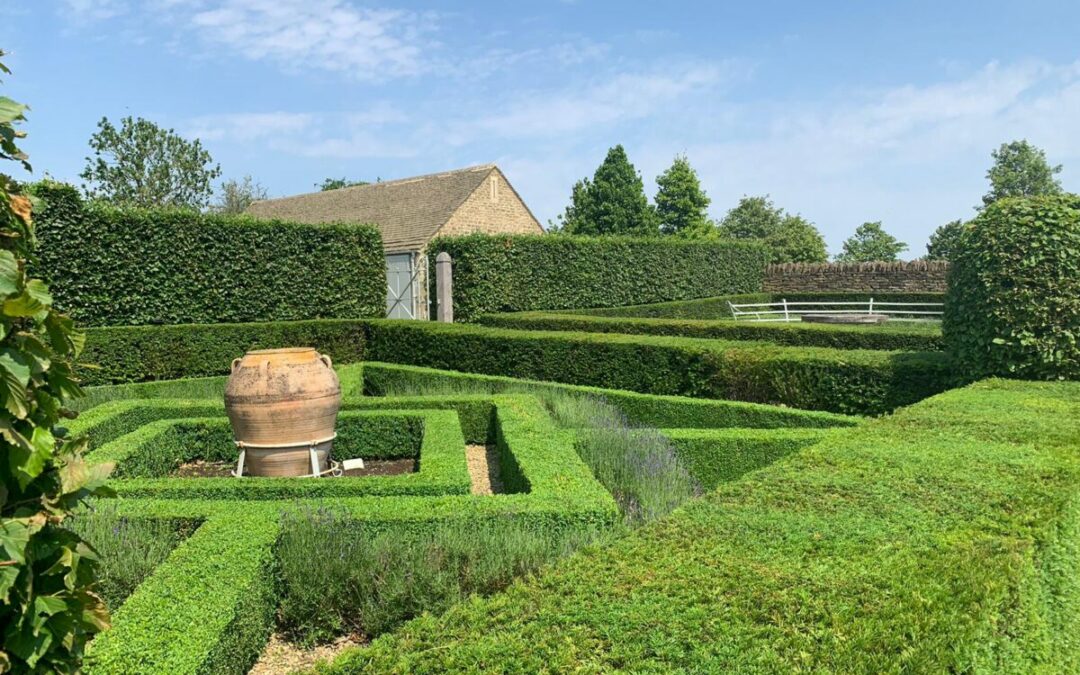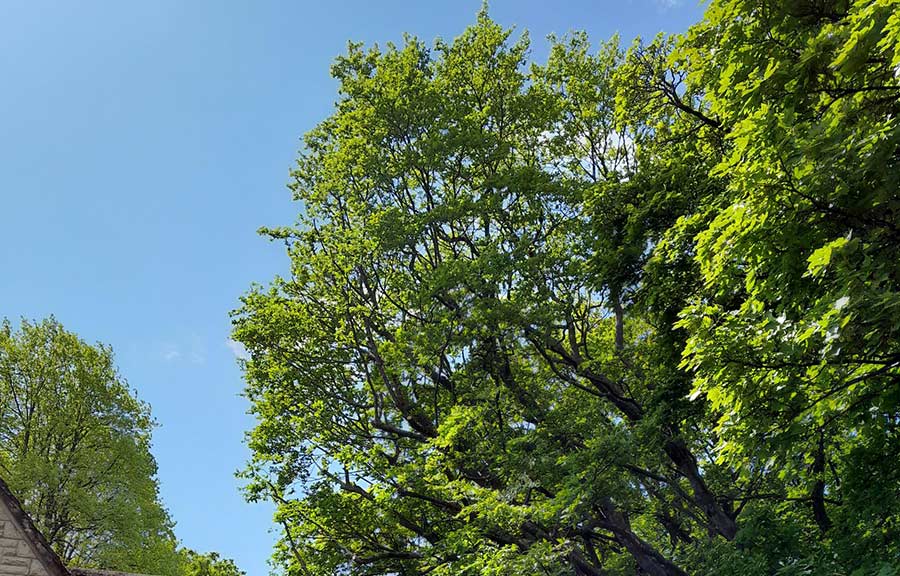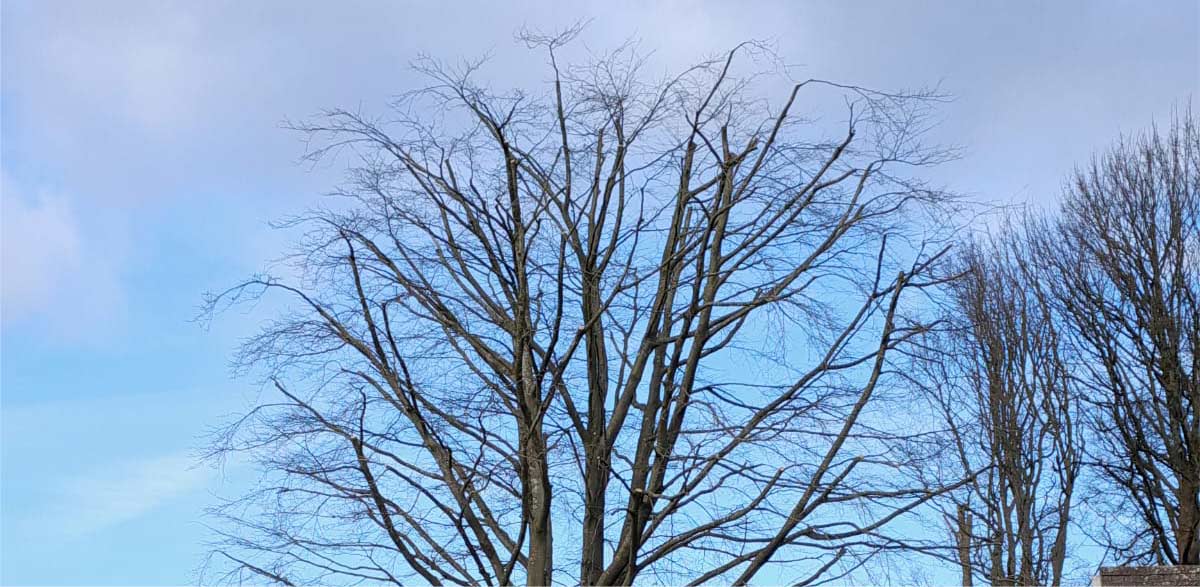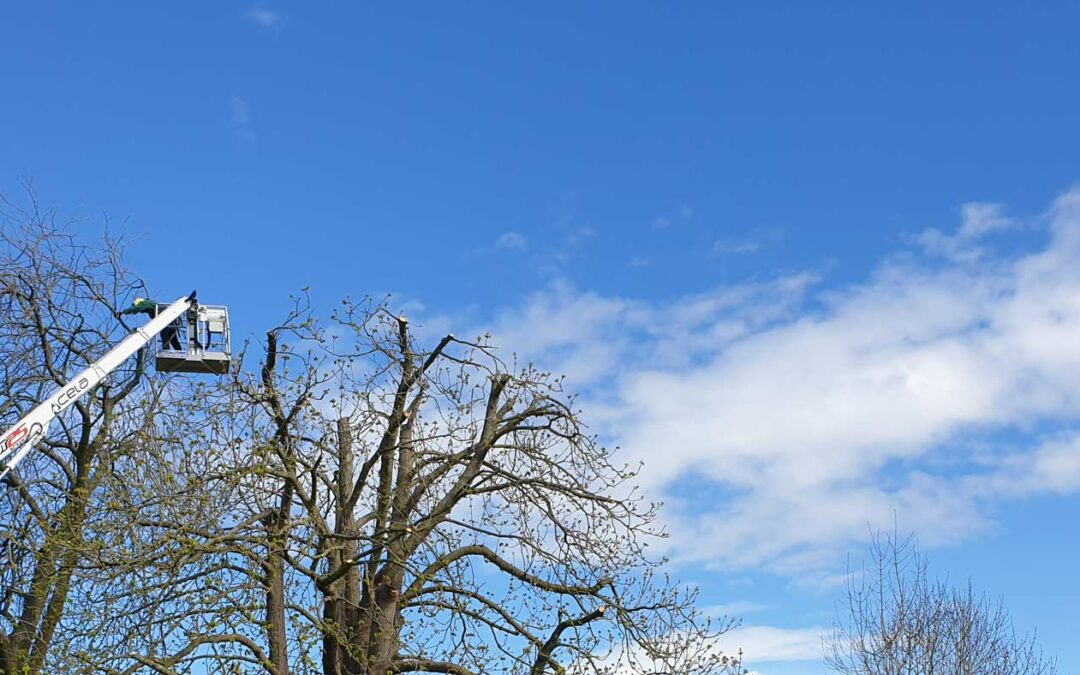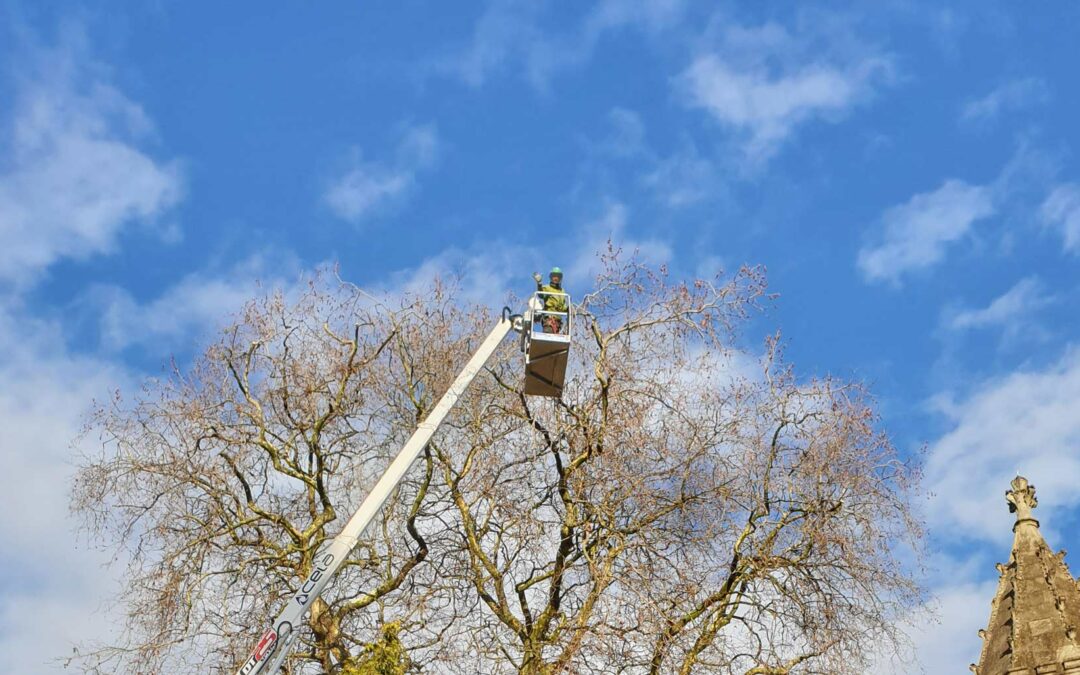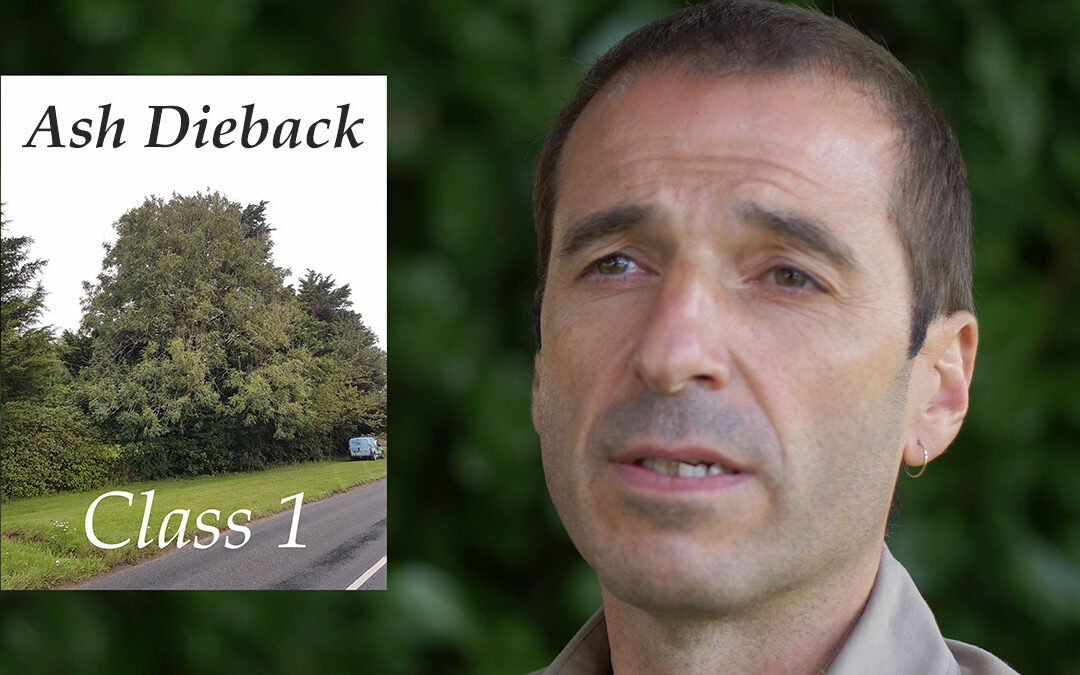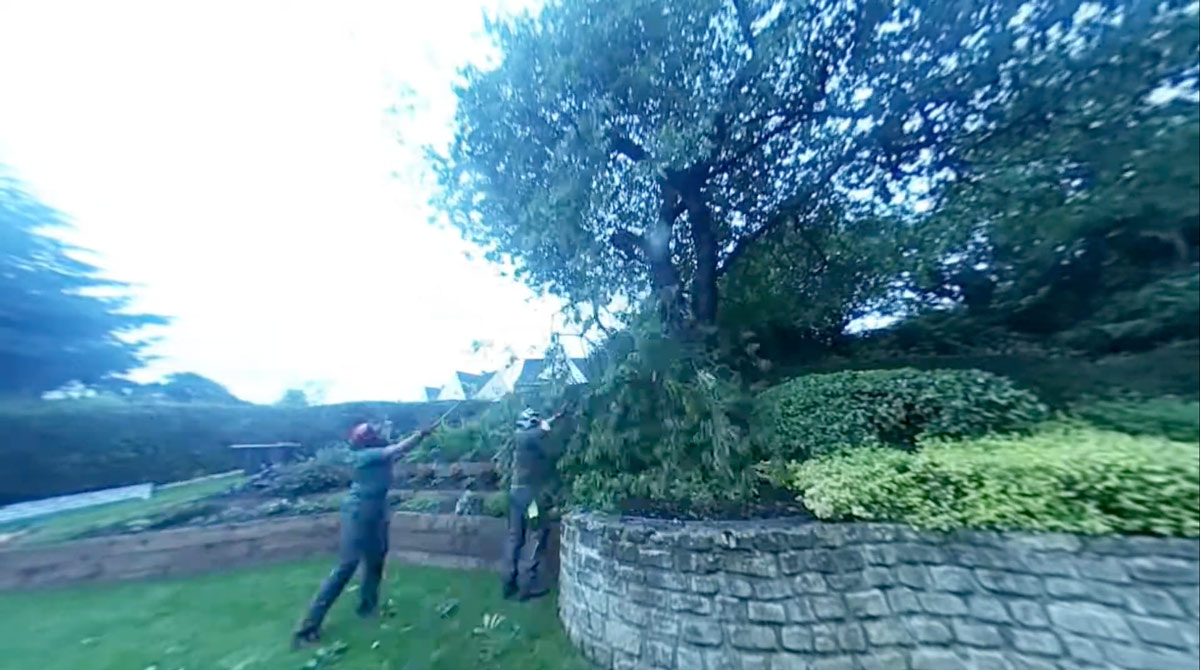At first this might seem a very straightforward question, and could be answered with a straightforward reply. But to do so would only be giving you a small amount of information that will have you coming back to ask more…
So let’s start with the simple answer to the question:
The best time to prune a cherry or plum tree is late June – mid August.
“Why not in the winter along with the apples and pears?” I hear you ask.
Cherries and plums belong to the group of trees known as ‘stone fruits’ (they have a stone in the middle of the fruit, not pips, like an apple or pear).
As a group they are particularly susceptible to Bacterial Canker and Silver Leaf disease (a fungal infection). Both of these can cause death of branches and, in extreme cases, the whole tree.
By pruning them during this summer period, you can take advantage of two things: firstly, the tree is actively growing (making it better able to combat any infection); secondly, the pathogens (diseases) are less virulent at this time (making infection less likely).
Now we know when and why, the next question is how?
There is an old saying “stone fruit hate the knife” and in fact they are better left alone!
However, this approach is all very well if the tree is in good shape and not too big. It is true to say that open grown cherries and plums generally require very little pruning especially when compared to the apples and pears.
The main reason for pruning is to maintain a strong branch structure, as plums often grow long thin branches, which are weak and can break under the weight of fruit.
Pruning should also allow more light and air to the fruit – remove dead / damaged / diseased branches (these must be burned or disposed of to reduce the risk of further infection).
The result of good pruning should be a tree with an open structure of branches, strong enough to hold its fruit and free of dead, damage and disease.
To ensure good results you also need the right tools!
A good pruning tool kit will include the following:
- A good quality pair of secateurs.
- A good pruning saw.
- A sturdy step-ladder (if the tree is too tall to prune from the floor).
- Chalk (to mark the branches to be removed – doing this allows you to stand back and have a look before you make the cut).
If you inherit an overgrown tree that is fruiting, but in danger of self-destruction due to branch length and the weight of the fruit, the branches can be propped or tied up until the fruit is harvested.
After fruiting the branches can then be pruned to reduce their length and avoid this problem in the future.
If large old trees require a ‘renovation prune’, it may be best to call in a skilled tree surgeon to carry out the task. This is for two main reasons, firstly the size of branch that needs cutting may require a chainsaw and secondly the volume of debris that needs to be dealt with may be more considerable than you realise!
This renovation prune will be the start of a new regime aimed at creating a tree with a strong, well-spaced branch structure, ready to bare fruit within easy reach.
Trees can also be trained from an early age into various shapes. These shapes can be due to space or to help the more exotic varieties of stone fruit (e.g. peach) to successfully bear ripe fruit.
The most common shapes for trained fruit trees are: Standards (or ½ Standard), Pyramids and Fans (Espalier and Cordons do not work so well for this group). Fan training against a sunny wall is the best way to get acid cherries, apricots, peaches and nectarines to fruit successfully in our less-than sunny climes.
To achieve the best results you must start with the right tree. This means a good quality tree, on the right rootstock for the planting position … fail to get this right and no matter how good your pruning is, your hard work (and money) will return little reward.
If this is what you want to achieve, then a good book should also be part of your tool kit (or ‘Google’ it!), as the pruning regime is fairly complex until you have an established tree that only requires maintenance pruning.
Of course, if you have the space to have open grown trees, the need for pruning is dramatically reduced.
Rootstocks
Fruit trees are available on a variety of rootstocks: these rootstocks determine the growth rate and ultimate size of the tree. A cherry on a ‘Colt’ rootstock will produce a small tree, ideal for fan training or a bush in a small garden, whereas the same tree on a ‘Malling F12/1’ will give you a large vigorous tree more suited to an orchard.
Each fruit type will have its own group of rootstocks – a good book or nurseryman will help you select the right one for your garden.
Common problems
- Gumming. An amber-coloured gum oozing from stems and branches. In plums it may also occur around the stone in the fruit (the fruit is still edible). Gumming is a result of the tree being stressed, the cause of which could be many things (e.g. a really heavy crop of fruit, or a disease). Try to identify the cause and rectify.
- Split fruits. This happens after a long dry period, followed by heavy rain. The fruit swell with the extra moisture available quicker than the skin can cope with, resulting in the skin splitting.
- Cherries can be susceptible to Black Fly, especially on the tender young growing tips. This need only be treated if excessive and is stressing the tree.
- ‘June Drop’. This is where the tree naturally thins its own fruit to reduce demand. Don’t worry, it is quite normal and should be allowed to happen before you decide whether the fruit needs thinning by hand.
- Shothole. These are small holes in the leaves (not actually made by insects), but caused by the same bacteria that causes Bacterial Canker. You should take this as a warning … avoid pruning outside of the recommended times and to keep the pruning to a minimum.
Looking for Tree Surgeons or Tree Consultants in Gloucestershire? Call Tree Maintenance Ltd. on 01285 760 466 for a free quotation.



